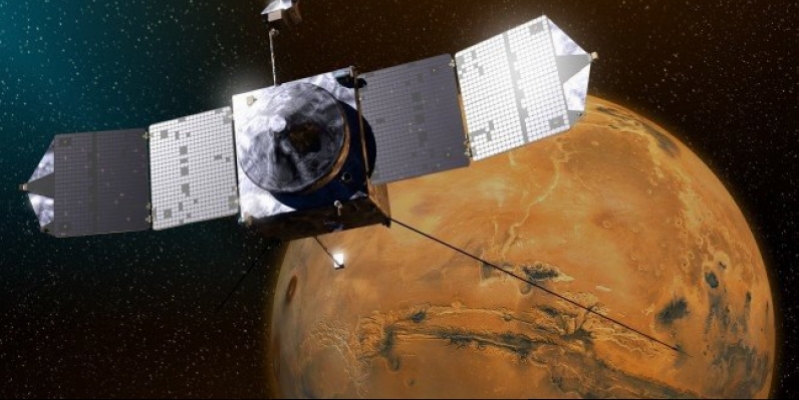United States National Aeronautics and Space Administration (NASA) space probe launched on Sunday MAVEN revolve around Mars mission, during which investigates how the Red Planet has become warm and wet cold and dry.
"Based on the observed data navigation - welcome: MAVEN is now in orbit" - NASA Goddard (Godard) Space Flight Center Representative Dave Fawlty (Fawlty Dave) reported 22 hours ago. 30 minutes.
Unmanned probe over more than 10 months, went about 711 million. kilometers before reaching Mars in order to make this unprecedented planetary boundary layer research.
Martian atmosphere and volatile evolution of the probe (MAVEN) should help scientists to understand what has happened to the water on Mars, and the carbon dioxide in the atmosphere, a few billion years.
How Mars lost most of its atmosphere - one of the greatest mysteries of science. New answers to help figure out what was the potential to sustain life on the planet, perhaps only micro-level, the very distant past.
MAVEN findings should also help to better understand how people could live there during the next flight to the red planet, scheduled to take place in 2030 you might have.
Mars - a cold place, but the atmosphere it is not very much, "- said MAVEN science team member John Clarke (John Clark).
"There is very cold - (temperature) is much lower than zero. Atmosphere (density) - only about half of one percent of that, which we breathe, - he added. - But we know that Mars may change, but in the past it may have been different. There is ample evidence that there was a history of an ancient Martian surface by running water. "
Now MAVEN will launch a six-week test period.
Subsequently, the probe will start one one-year mission, which will be tested during the Martian atmospheric gases in the upper layers and their interactions with the Sun and the solar wind.
During the MAVEN mission will fly a maximum of 6 000 km above the planet's surface.
However, the device also significantly lowered five times and reach almost 125 kilometers to the surface, while investigating the composition of the atmosphere at various levels.



